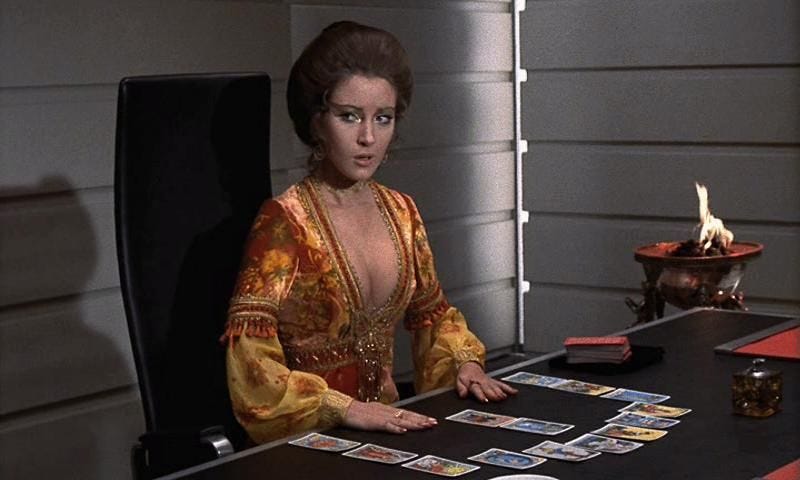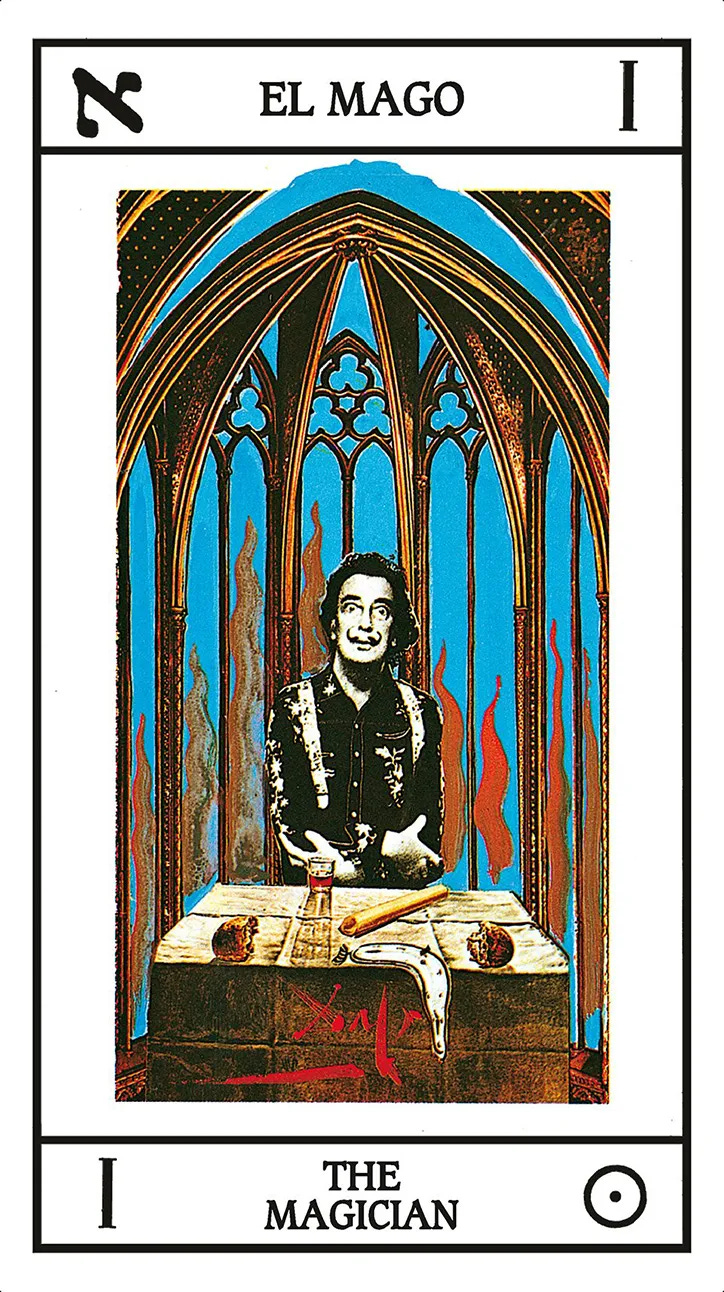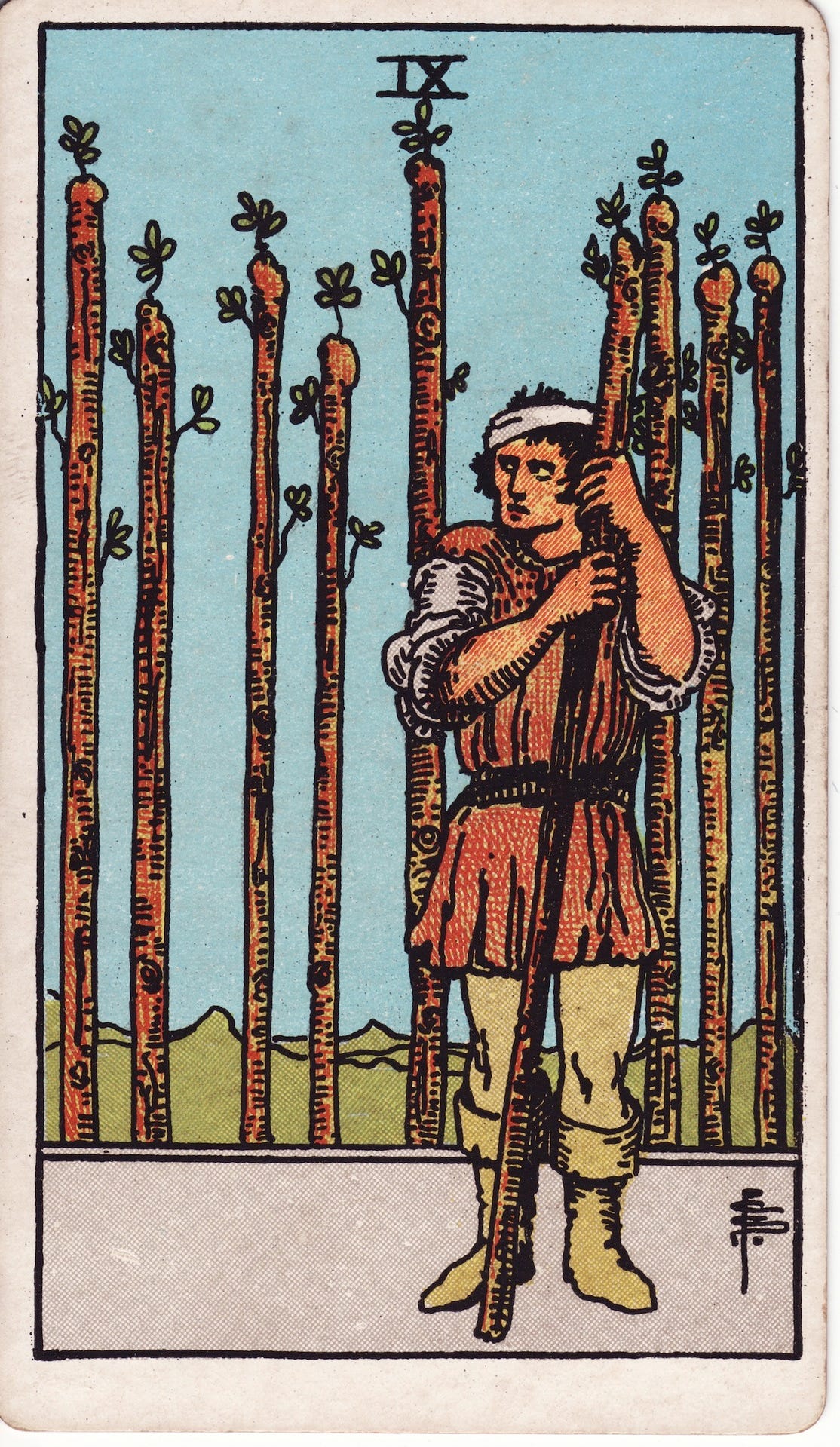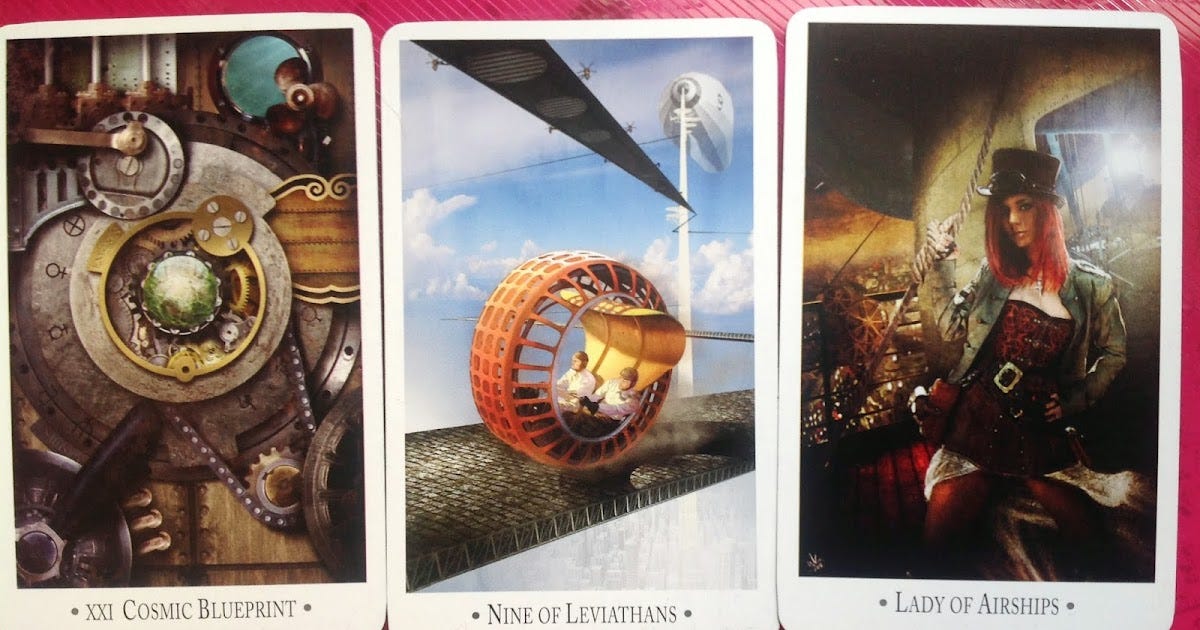I've been fascinated by magic and the occult for my entire life. It started with Solitaire in Live and Let Die when I was just six years old, which gave me a lifelong love of Tarot cards.
Since then, I've owned many different sets, ranging from the traditional Swiss Müller deck, to Aleister Crowley’s infamous Thoth deck and the well-known Rider-Waite deck, created by the Golden Dawn. I have a beautiful deck designed by Salvador Dali, as well as several non-traditional decks, including one based on the artwork of Hieronymus Bosch, and my personal favorite, a steampunk deck. (I actually bought that one as a joke, and was extremely surprised at how thoughtful and well-constructed it was.)
Tarot cards can be a remarkably powerful tool for authors. They're loaded with archetypes and imagery, designed to get us thinking. This makes them very useful writing prompts. Pull a card, and see what it suggests to you. Nine of Wands: a security guard at a factory who’s overwhelmed by the stress of the job.
Pull several, and weave them all into a story. Nine of Wands + Two of Swords (decision) + Ten of Pentacles (riches). The guard is tempted to take a bribe to let someone in: should he take the money or stay loyal to his employer?
You can also use them to help with characterization. Again, you can take a simplistic approach and pull just one card. This will give you basic archetypal characters, which may be enough to unblock your creativity. King of Cups: a powerful man, devoted to his family, but possibly corrupt and untrustworthy. City official? Mafia boss? Cop?
Create even more complex characters by pulling several cards and using these to find different aspects to their character. King of Cups + Four of Wands (family life) + Temperance (healing, balance). How about a politician who decides to give up his position to care for his sick wife and comes to terms with what’s really important to him?
If you’re really looking for inspiration, try doing a whole spread of seven or ten cards. Many of the traditional Tarot spreads are designed around describing a journey: you can use these to come up with both plotlines and character arcs. What happened in the past? What are the inciting incidents? What obstacles will the characters encounter? What could go wrong? And how will they resolve it?
You don't have to know anything about the traditional meanings of the cards to find them useful. Just look for something in the picture that inspires you. It could be something in the background, or the way a character is standing or looking at you.
In my experience, plain Tarot decks don't work well as writing prompts: they can work if you’re sufficiently familiar with the meanings, but it's much better to choose a deck that has rich artwork which resonates with you.
This is where the non-traditional decks really come into their own: you can find decks on just about any theme, from fantasy to science fiction, from many different cultures, and contemporary settings. And of course, the theme of your deck doesn’t need to match the theme of your story: there’s nothing wrong with using medieval images to inspire a contemporary thriller.
It's also important to note that you don't have to believe in Tarot or magic of any sort to find them useful. Just treat them as a diverse collection of 78 images that encapsulate a wide range of human emotions, motivations, and situations.
Corrine Kenner’s Tarot for Writers is a handy little book that can help you find ways to use tarot cards as a writing tool. For each of the cards, she explains the symbology, the meaning, some of the associated mythology, and the major archetypes characters. She then suggests some writing prompts for each card.
I will admit, this isn't a book I refer to often. I'm sufficiently familiar with the Tarot that I don't need it any more. However, what I found really useful was the opening section that explains the techniques that authors can use to stimulate ideas and break through writer’s block. Once I understood the possibilities, everything else was obvious.
I wouldn't necessarily recommend buying it, unless you're the kind of writer who loves having a bookshelf full of writing books, but I'd certainly recommend grabbing a copy from a library and giving it a quick skim.









I used to do Tarot readings in the JCR in return for a cup of tea and a bun. People would initially scoff, and I'd always say they were right to be sceptical because there was of course nothing magical about a bunch of pictures on cards. Then I'd do the reading and they'd all say, "That was incredible," and I'd remind them there was nothing supernatural going on (they were simply using the symbols as an imaginative springboard to reveal things they hadn't yet consciously processed) but most of them went away imagining I was some kind of mind-reader.
I don't use tarot cards but I do have some lovely cards from StoryWorld which do a similar thing being very intricate and prompting all sorts of ideas for stories. I need to use them more often.